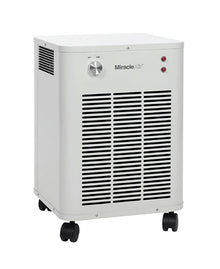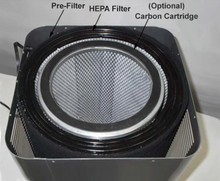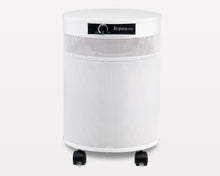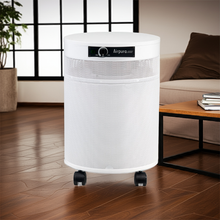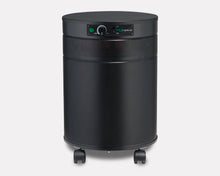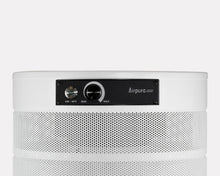The Science Behind Superior Air Purification: Why Higher CFM and Advanced Filtration Matter.
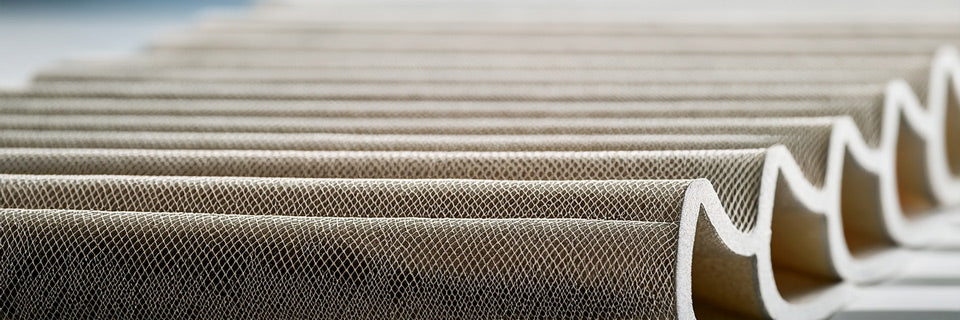
The truth about clean air is more complex than it seems. When you shop for an air purifier, you’re likely faced with a sea of options, all promising to deliver a healthier home. But what do the technical specifications on the box really mean? How do you know if a unit is truly powerful enough to make a difference for your allergies, asthma, or general well-being? The answer lies in the science behind superior air purification, a world defined by two critical factors: CFM (Cubic Feet per Minute) and advanced, multi-stage filtration. These aren't just marketing terms; they're the core of a high-performance air purifier's effectiveness. Understanding this technology empowers you to make an informed decision, moving beyond basic assumptions to truly invest in a system that can transform the air you breathe.
The quality of our indoor air has a direct and profound impact on our health, yet it's an issue that often goes unnoticed. The air inside our homes can be up to five times more polluted than the air outside, containing a complex mix of particulate matter, chemical gases, and biological contaminants. Common sources include pet dander, mold spores, pollen, dust mites, and a cocktail of volatile organic compounds (VOCs) from everyday products like cleaners, paints, and furniture. A study from the World Health Organization (WHO) highlights the serious health risks associated with this indoor air pollution, linking it to respiratory diseases, allergies, and other long-term health problems (WHO, 2021).
While many air purifiers on the market can provide a degree of filtration, they often lack the power and sophistication to effectively address the full spectrum of indoor air pollutants. This is where the science behind superior air purification comes in. It's not enough to simply have a filter; the system must be capable of moving a sufficient volume of air and passing it through a series of specialized filters to capture a wide range of contaminants. This combination of high-volume airflow and sophisticated filtration technology is what distinguishes a truly effective air purifier from a basic fan with a filter.
The Importance of CFM: A Core CFM Air Purifier Explanation
The first and most fundamental concept in understanding a high-performance air purifier is CFM, or Cubic Feet per Minute. Simply put, CFM measures the volume of air an air purifier can move and clean in a minute. This isn't just about how quickly the air moves; it’s a direct indicator of the unit's power and its ability to effectively purify a given space.
Think of it this way: imagine you're trying to scoop water out of a leaky rowboat. A small cup will eventually get the job done, but a large bucket will be far more effective, and a powerful bilge pump will be the most efficient solution. The same principle applies to air purification. A low-CFM unit is like a small cup, slowly trying to clean the air in a room, while a high-CFM unit is a powerful pump, capable of rapidly and thoroughly cycling the air.
Air changes per hour (ACH) is a related concept that helps put CFM into context. ACH is a measure of how many times the entire volume of air in a room is replaced by purified air in one hour. The higher the CFM, the higher the ACH for a given room size. For optimal health and a true sense of clean air, the industry standard for a home environment is to achieve at least four air changes per hour. For individuals with severe allergies, asthma, or chemical sensitivities, even higher ACH rates are recommended. A high-CFM air purifier makes it possible to reach and maintain these crucial ACH levels, even in larger living spaces.
The Science of Advanced Air Filtration: Beyond the HEPA
While HEPA filtration is a cornerstone of modern air purification, a truly high-performance air purifier uses a multi-stage approach to tackle a broader range of pollutants. The science of clean air is based on targeting different types of contaminants with specialized filter media.
-
Pre-Filtration for Longevity: The first line of defense is a pre-filter, which captures large particles like dust, pet hair, and lint. This serves a dual purpose: it extends the life of the more expensive HEPA filter and ensures optimal airflow by preventing the HEPA filter from getting clogged too quickly.
-
HEPA Filtration for Particulates: A high-efficiency particulate air (HEPA) filter is essential for removing microscopic particles. According to the U.S. EPA, a true HEPA filter can remove at least 99.97% of airborne particles as small as 0.3 microns, including pollen, mold spores, dust mites, and even some bacteria and viruses (U.S. EPA, 2023). In an advanced system, the HEPA filter will be much thicker and have a larger surface area, allowing it to hold more particles and last longer before needing replacement.
-
Activated Carbon for Gaseous Pollutants: This is where a high performance air purifier technology truly shines. HEPA filters are excellent for particles but are ineffective against chemical gases, odors, and Volatile Organic Compounds (VOCs). Activated carbon, a porous material with a massive internal surface area, uses a process called adsorption to trap these gaseous molecules. A superior air purifier will use a significant amount of high-quality activated carbon—often a deep bed or a heavy granular filter—to effectively remove a wide spectrum of chemicals from the air. This is a key benefit, especially for homes where cooking fumes, new furniture off-gassing, or cleaning products are a concern.
-
Optional Specialized Filtration: Some advanced systems may include additional layers, such as potassium permanganate or alumina, to enhance the removal of specific chemicals like formaldehyde, a common indoor pollutant linked to a variety of health issues (National Cancer Institute, 2021).
The Synergy of CFM and Advanced Filtration
The true power of a high-performance air purifier lies in the synergy between its CFM rating and its multi-stage filtration system. You can have the best filters in the world, but if the unit's fan can't move enough air through them, they will be ineffective. Conversely, a high-CFM fan with only a basic filter will move a lot of air but won't be able to remove a wide range of pollutants. The most effective units combine a powerful, high-CFM fan with a robust, deep-bed, multi-stage filtration system.
This combination ensures that the air in a room is not just moving, but is being thoroughly and consistently cleaned. The fan pulls in large volumes of air, forcing it through the layers of filtration, where particles and gases are effectively captured. The result is not just a cleaner room, but a tangibly healthier environment. This is a core part of the advanced air filtration benefits that go beyond simple particle removal.
Why a High-Performance Air Purifier is a Wise Investment
Deciding to invest in a superior air purification system is about prioritizing your health and well-being. The initial cost may be higher than a basic unit, but the long-term value is significant. A high-performance air purifier with a robust CFM rating and advanced filtration technology offers several key advantages:
-
Superior Allergen and Contaminant Removal: By combining a high-CFM fan with deep-bed HEPA and activated carbon filters, these units can provide a level of air quality that is unmatched by residential models. This is particularly beneficial for allergy and asthma sufferers, as well as individuals living in areas with high levels of pollution.
-
Reduced Filter Replacement Costs: While the replacement filters for a high-performance unit may be more expensive individually, they typically last much longer due to their superior build and larger capacity. This can lead to a lower total cost of ownership over the life of the unit.
-
Durability and Reliability: Built with commercial-grade components, these units are designed to run continuously without fail. This reliability is crucial for maintaining a consistently clean and healthy indoor environment.
-
Tangible Health Benefits: The most compelling reason to invest in a high-performance air purifier is the potential for improved health. By consistently reducing exposure to allergens, chemical irritants, and other pollutants, you may experience a reduction in symptoms and a noticeable improvement in your overall well-being.
The choice of an air purifier shouldn't be based on price or superficial features alone. It should be a decision rooted in an understanding of the science behind superior air purification. By prioritizing CFM and advanced filtration technology, you are making an investment in a healthier future for yourself and your family.
Source Requirements:
-
World Health Organization (WHO). (2021). WHO global air quality guidelines. Retrieved from https://www.who.int/publications/i/item/9789240034228.
-
U.S. Environmental Protection Agency. (2023, February 17). Guide to Air Cleaners in the Home. Retrieved from https://www.epa.gov/indoor-air-quality-iaq/guide-air-cleaners-home.
-
National Cancer Institute. (2021, March 26). Formaldehyde and Cancer Risk. Retrieved from https://www.cancer.gov/about-cancer/causes-prevention/risk/substances/formaldehyde.
Author Bio:
This article is by Commercial Air Purifiers, LLC, a leading provider of high-quality air purification solutions for residential and commercial spaces. Our team is dedicated to helping individuals and families create healthier indoor environments. We are committed to providing evidence-based information and effective products to address a wide range of air quality concerns.
Publication Date: October 26, 2023
FAQ Section
Q: What is a good CFM rating for my home? A: A good CFM rating depends on the size of the room you're purifying. To calculate the needed CFM, you can use the formula: (Room's Square Footage x Ceiling Height) / 60. This gives you the CFM needed for one air change per hour. For superior purification, aim for a unit that can provide 4-6 air changes per hour for your space.
Q: Can a high-performance air purifier get rid of all smells? A: While a high-performance air purifier with a deep activated carbon filter is highly effective at adsorbing and eliminating a wide range of odors and chemical smells, it may not remove them instantly or completely, especially if the source of the odor is still present. It's a key tool for odor management, but source control (e.g., proper ventilation, cleaning spills) is also essential.
Q: What is the difference between a high-performance air purifier and a simple fan with a filter? A: The main difference lies in the quality and synergy of the components. A simple fan with a filter often has a low CFM, a basic filter that may not be a true HEPA, and lacks the deep activated carbon filtration needed for chemical and odor removal. A high-performance air purifier is engineered with a powerful motor, a high CFM, and a robust multi-stage filtration system designed for superior and comprehensive air cleaning.
Q: Are high-performance air purifiers louder than residential models? A: Not necessarily. While a more powerful fan can generate more noise at its highest setting, many high-performance units are designed with advanced sound-dampening technology. This allows them to run quietly on lower, energy-efficient settings for continuous, daily purification.

